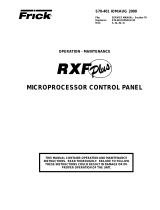
IMPORTANT SAFETY INSTRUCTIONS
H-100 Control Panel Technical Manual
SAVE THESE INSTRUCTIONS – The manufacturer suggests that these rules for safe operation
be copied and posted in potential hazard areas. Safety should be stressed to all operators
and potential operators of this equipment.
Study these SAFETY RULES carefully before install-
ing, operating, or servicing this equipment. Become
familiar with this manual and all literature pertain-
ing to the generator set and related equipment. This
equipment can operate safely, efficiently, and reliably
only if it is properly installed, operated, and main-
tained. Many accidents are caused by failing to follow
simple and fundamental rules or precautions.
Generac cannot anticipate every possible circum-
stance that might involve a hazard. The warnings in
this manual, and on tags and decals affixed to the
equipment, are, therefore, not all inclusive. If using
a procedure, work method, or operating technique
the manufacturer does not specifically recommend,
ensure that it is safe for others. Also make sure the
procedure, work method, or operating technique uti-
lized does not render the equipment unsafe.
GENERAL HAZARDS
For safety reasons, the manufacturer recommends
that this equipment be installed and serviced by
an Authorized Service Dealer or other qualified
electrician or installation technician who is famil-
iar with applicable codes, standards, and regula-
tions. The operator also must comply with all such
codes, standards, and regulations.
When working on this equipment, remain alert
at all times. Never work on the equipment when
physically or mentally fatigued.
Inspect the equipment regularly, and promptly
repair or replace all worn, damaged or defective
parts, using only factory-approved parts.
Before performing any maintenance on the gen-
erator or any related equipment, disconnect the
generator’s battery cables and remove panel fuse
to prevent accidental startup. Disconnect the cable
from the battery post, indicated by a NEGATIVE,
NEG, or (–) first. Reconnect that cable last.
ELECTRICAL HAZARDS
Generators produce dangerous electrical voltages
and can cause fatal electrical shock. Avoid contact
with bare wires, terminals, connections, etc., while
the generator and related equipment are running.
Ensure all appropriate covers, guards, and barri-
ers are in place before operating the equipment.
If working around an operating unit, stand on an
insulated, dry surface to reduce potential shock
hazards.
•
•
•
•
•
Do not handle any kind of electrical device while
standing in water, while barefoot, or while hands or
feet are wet. DANGEROUS ELECTRICAL SHOCK
MAY RESULT.
If people must stand on metal or concrete while
installing, operating, servicing, adjusting, or repair-
ing this equipment, place insulative mats over a
dry wooden platform. Work on the equipment only
while standing on such insulative mats.
Wire gauge sizes of electrical wiring, cables, and
cord sets must be adequate to handle the maxi-
mum electrical current (amperage) to which they
will be subjected to.
Before installing or servicing this equipment, make
sure that all power voltage supplies are positively
turned off at their source. Failure to do so will result
in hazardous and possibly fatal electrical shock.
When installed with an automatic transfer switch,
the generator may crank and start anytime, with-
out warning. To prevent injuries caused by sudden
start-up, disable the generator’s automatic start
circuit before working on, or around, the unit.
Then, place a “Do Not Operate” tag on the genera-
tor control panel and on the transfer switch.
In case of an accident caused by electric shock,
immediately shut down the source of electrical
power. If this is not possible, attempt to free the
victim from the live conductor. AVOID DIRECT
CONTACT WITH THE VICTIM. Use a nonconduct-
ing implement, such as, a rope or board, to free
the victim from the live conductor. If the victim
is unconscious, apply first aid and get immediate
medical help.
Never wear jewelry when working on this uipment.
Jewelry can conduct electricity, resulting in electric
shock, or may get caught in moving components,
causing injury.
FIRE HAZARDS
• For fire safety, the generator and related equip-
ment must be installed and maintained properly.
Installation always must comply with applicable
codes, standards, laws, and regulations. Adhere
strictly to local, state, and national electrical
and building codes. Comply with regulations the
Occupational Safety and Health Administration
(OSHA) has established. Also, ensure that the
equipment is installed in accordance with the
manufacturer’s instructions and recommenda-
tions. Following proper installation, do nothing
that might alter a safe installation and render the
unit in noncompliance with the aforementioned
codes, standards, laws, and regulations.
•
•
•
•
•
•
•





















